What Being on TED Taught Me About Comfort Zones
“In order to grow, you’ll need to step outside your comfort zone.”
We’ve all heard it before.
But what is a comfort zone? What does it actually mean in practice? What does it look like?
Is there any real benefit to it or will you just make a fool of yourself? And are there things that you can do each day to get better at it?
These were questions that I was asking myself recently when I had to really step out of my comfort zone.
And as someone keenly interested in human performance, it compelled me to study some of the research around this topic.
But before we dive into my findings, I’d like to share my recent experience of stepping out of my comfort zone…
Living out the Dream… A Little Differently
>Five years ago, “Giving a TED Talk” was at the top of my list of 'Goals I wanted to achieve.' But as the years rolled on I started to give up the dream.
Then in 2017, everything changed.
Unexpectedly, I was given the opportunity to be involved in a TED Event, but in a slightly unconventional way…a way that forced me out of my comfort zone.
On Monday 11 December 2017, Westpac hosted Australia’s first official TED conference at the Hordern Pavilion, Sydney.
Instead of delivering a conventional speech, I managed to create something different, far more challenging and special for me. Here’s why.
I’ve been a Latin dancer for almost a decade now.
It was something that I fell into, fell in love with and eventually, along the journey, managed to win three Australian championship titles. The passion evolved into more than just an after work hobby.
But this was something that I avoided sharing outside the dance scene.
A few years ago, when I was still in the legal profession, some male colleagues saw an online video of me performing with my dance partner. This seemed funny to them and so they didn’t hesitate to make inappropriate derogatory jokes during a meeting, in my presence.
I was hurt, embarrassed and for years I decided to keep that part of my life private from my professional circle.
I never imagined that someday I would merge my love of dance with speaking, let alone on TED.
I never thought that through I could provoke an audience to shift their perspectives and to think differently.
But that’s what I decided to do.
In the spirit of TED’s motto, ‘ideas worth spreading’, I chose to work with one of Australia’s most renowned Ballroom Dancers, Dancing with the Stars’ Aric Yegudkin, and together we created a narrative dance performance which was choreographed to be both impactful yet motivating. Entertaining while inspiring. Infused with a message that is close to my heart.
The journey wasn't so easy. I had to commit to a dancing style that's foreign to me.
I didn’t know how the audience would respond to a narrated dance performance.
Speaking and Dancing were two different passions of mine, but bringing the two together on a very public stage like TED, untested, was scary...
I'd have to fly between 2 cities in order to rehearse with Aric while working, studying my MBA, delivering speaking engagements and planning for a wedding (my own!) scheduled only a week before TED.
At times I even thought about quitting. It was tough. Frustrating.
We hit obstacles… challenges in finding the right piece of music, getting the music licensing rights, convincing TED to accept the talk’s concept…
After months of uncertainty, I found myself on stage and it was actually happening. We actually made it.
TED writes:
“...a beautiful expression of unity" that celebrates "diversity through collaboration... Zahrai suggests that we are all dancers on the stage of life, with a part to play in building our collective future.”
It turned out to be an incredible experience for me as an artist, a performer and a speaker.
It was definitely outside of my comfort zone. For the first time I was able to embrace my authentic self, without fear of how my colleagues in the ‘corporate world’ would perceive it.
So here's what I Learned
>The piece I created for TED was different. It was risky. I had no idea how it would be received. No idea if people would like it. If they'd understand. If they'd resonate.
It was certainly pushing the boundaries of my own personal comfort zone. Yet, it was something that I genuinely wanted to do.
And you know what? That’s the point.
We shouldn’t be afraid to be different, to challenge convention and to honestly express ourselves. To speak our truth. To embrace who we are and go outside our comfort zones.
So then, how do we know what is within our comfort zone and what lies beyond it? And how do we make sure we don't bite off more than we can chew?
Let's find out…
If you’re not outside your Comfort Zone, you won’t learn anything
>“Growth and comfort do not coexist” — Ginny Rometty
Each of us has our own comfort zone. You have one. I have one. Your momma has one... It’s a psychological, emotional or behavioural space where you think and act in ways that minimise risk and stress (Yerkes and Dodson, 1908). It provides a state of mental security.
It’s easy. Comfortable. There’s no risk of failure.
But, experiencing a little stress now and then is actually a good thing. Without it, you won’t experience anything new – no challenges, no risks, and no growth.
If you actually want to learn, to grow and to be better, staying comfortable isn't going to help you. Organisational Behaviour Professor Andy Molinsky recently published an article in the Harvard Business Review about this very topic but in a professional context (you can read it here). He shares, "As we grow and learn in our jobs and in our careers, we’re constantly faced with situations where we need to adapt our behavior. It’s simply a reality of the world we work in today. And without the skill and courage to take the leap, we can miss out on important opportunities for advancement."
Basically, you don't learn if you're comfortable.
But what if you go too far outside of your comfort zone, into a place where it's just too stressful and you don't feel like you have any chance of succeeding?
Well, this place actually exists and even has a name. It's known as the Zone of Destructive Anxiety. Here, as the name makes obvious, you’re actually too stressed to be productive. You may be jittery, your heart-rate may be racing, you’re unable to focus and could have clouded judgment. Your performance drops off sharply. Your state becomes a destructive force.
Hmm, doesn't sound so good.
Where you actually want to be is somewhere between your Comfort Zone and your Zone of Destructive Anxiety. Here you’ll find a happy place. This in-between space is ideal for learning and growth. Developmental psychologist Lev Vygotsky refers to this as the Zone of Proximal Development (also known in sport as the Zone of Optimal Anxiety - Hanin, 1980). It's exactly where we want to be. But why?
Well, in simple terms, the Zone of Proximal Development is the space where you're challenged, but if you put in the extra effort or seek the support you need you can achieve the outcome. You have just enough stress to keep you engaged and focussed - you have keener intellect, sharper problem solving skills and the commitment to complete the task or seek out the help you need. It allows you to stretch and learn, while still being able to achieve.
This positive relationship between performance and stress is known as the 'Yerkes-Dodson Law' (you can read more about it in an interesting Harvard Business Review article here).
So, what do you get when you step outside your comfort zone?
>There are so many added bonuses to stepping outside your comfort zone. Here are the four that I found most interesting.
- You’ll be more productive. Comfort kills productivity. As Ran Zilca of Psychology Today shares, “being comfortable often prohibits us from chasing our dreams.” Pushing personal boundaries can help you get more done. It can help you feel more ambitious and give you the drive to learn new things. To do more. To be more.
- You’ll be more adaptable to change. Harvard Professor Brené Brown shares that if you challenge yourself to do things you normally wouldn’t, you can prime your body to be able to handle changes better. You actually don’t really know what you're made of unless and until you venture outside familiarity. I can absolutely relate to this through my TED experience. Early on, we received news that we couldn't get the clearance for our chosen song (crisis!), so had to start from scratch with only 6 weeks to spare. While it was frustrating at the time, it prepped us to be able to handle all sorts of changes that came our way in the weeks that followed.
- You’ll become more creative. When you seek new experiences, learn new skills and open new doors, you become inspired. You challenge existing ideas and your own confirmation bias (which is the tendency to only seek out information we already agree with). The frustration that comes from tackling the unknown paves the way for brainstorming new possibilities and viewing challenges with a different lens. Tim Harford’s TEDtalk called How Frustration Can Make Us more Creative provides a unique insight on this point.
- You’ll grow, whether you want to or not. Psychiatrist Abigail Brenner M.D, author of Transitions, writes of how taking risks and stepping outside the familiar leads to growth experiences. Even if you make a mistake or don’t get it right at first, you're expanding your repertoire of life skills and self-knowledge. You’re also expanding the size of your comfort zone, which really is a win-win.
Simple Suggestions to Escape your Comfort Zone, Daily
>So, you understand now why stepping outside your comfort zone is a good thing, but can you get better at it?
Yes, you absolutely can!
Like anything, the more you do it, the easier it'll become. Here are five simple suggestions to help you escape your comfort zone, one step at a time.
- Take baby steps. Don’t try to do too much, too quickly. Allow yourself time. Breaking your goal down into small, achievable daily steps is the easiest way to achieve those huge successes. For example, if you want to tackle a fear of public speaking, don’t jump right in to speaking at an industry event – you may end up traumatised! Just kidding... it won't be that bad. Instead, start small by signing up for public speaking classes, and start by speaking up in smaller meetings.
- Do small things that scare you. In best-selling author and business coach Tim Ferriss' book, The 4-Hour Work Week, he suggests that you should try to fill your day with lots of 'comfort challenge' activities that challenge you to do something different. Maybe you could try to negotiate for your coffee at your local café (but don't be surprised if it doesn't work). Put your hand up to take on a task you’ve never done before. Hug a random stranger (although best not in the workplace as this could likely be classed as harassment). By developing a habit of becoming familiar with discomfort you’ll soon realise that it’s not all that hard to do.
- Turn every experience into a lesson. When we adopt a growth mindset (you can watch psychologist Carol Dweck's TED Talk on the subject here), we can start to see every challenging experience as an opportunity for growth. We can ask ourselves, “What am I learning about me? About others? About the situation? How can I use this in my personal and professional life?”
- Become your own personal coach. Patrick Jinks from The Forbes Coaches Council suggest that you can elevate your thinking by coaching yourself. Here you ask yourself questions like, “What is the worst that could happen? What is holding me back? How can I make this a better experience?” This will help you re-engage your pre-frontal cortex, which basically means you’ll be able to calm yourself and be better prepared before you step outside your comfort zone.
- Don’t go at it alone. One of the best things you can do is to enlist the support of a friend, colleague or mentor on our journey. When trying something new, you’ll have another perspective, and this collaboration will give you a shoulder to lean on while also learning new tips and tricks on how to take on the risk. Asking for help is a sign of strength, not weakness. When I first started planning my piece for TED, I knew that I wanted to do something, so enlisted the help of choreographer Aric Yegudkin, and surrounded myself with coaches and mentors. I couldn't have done it without their input and support.
So there you have it. Not as difficult as you thought, is it?
Stepping outside your comfort zone (but not beyond what you can handle) brings with it a range of benefits and can be as easy as changing your mindset.
Being involved in TED was an experience that showed me the value of escaping my own comfort zone and proved to me that we're all far more capable than we think. You can absolutely step outside your comfort zone and make it part of your journey of growth.
To see me step outside my comfort zone, you can see my narrated piece for TED below.
></iframe>-A huge thank you to TED and Westpac for the opportunity to be on the TED stage, to live out a dream and to step outside my comfort zone.
Have you done something risky or a little different in order to be heard? Or do you have an experience finding creative ways to escape your comfort zone? I’d love to hear about it in the comments below!
?
You May Also Like

The CMO of People
Many organizations are not getting the best out of their HR function. Ask a CEO, “What is your...

The Challenges of Hiring Future Ready Leaders and Russian Doll Theory of Hiring
One of the biggest challenges most companies face today is hiring transformational leadership talent...

Why Do Most Innovation Programmes Fail?
What do companies do when a new boss says “Innovation has to be part of our DNA”? Here ...

The Greatest Resource any Organization has is the Creativeness of People
For too many years people have been treated as expense items instead of highly valuable resources. T...

How To Quit A Job You Love
It is not easy to quit a job you love. Even with a new dream job in-hand, cutting the cord that conn...
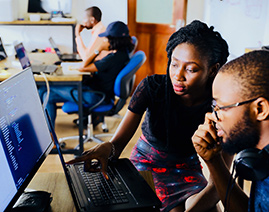
Take on Mistakes
Yes, we do say mistakes teach you a lot and you shouldn’t be afraid of making mistakes. But we...
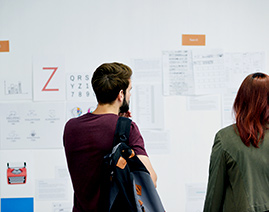
Five Stages Of Organization Evolution And Key Characteristics And Concerns At Each Stage
Organizations almost always progress through five more-or-less well-defined evolutionary growth stag...

Managing in Multi-Cultural Environment
As several companies expands the business overseas, it is crucial to understand how to run the busin...

Crossing Corporate Cultures Creativity In Organizations Across Industries
Every market has its own unique business practices. People working in different business sectors dev...

Four pillars of Yoga for holistic health
Every human is unique; therefore it is necessary for each of us to find out for ourselves how we can...
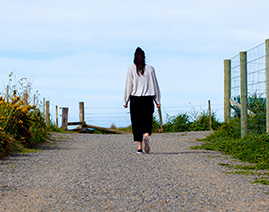
Brave to Lead Like a Girl
All of us are dealt a unique deck of cards. Our aim is to identify our strengths and play those card...
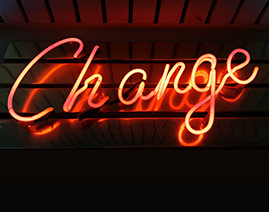
How do you Extend Influence to Others and Change Lives?
You Change Lives When You Empower Others! (Extending Influence #1) When you empower others you chan...

How Important is Vision in a Successful Life?!
Understanding Vision (How Important is Vision #1) How do you communicate and give vision to ...

How do you Extend Influence to Others and Change Lives?
You Change Lives When You Empower Others! (Extending Influence #1) When you empower others y...
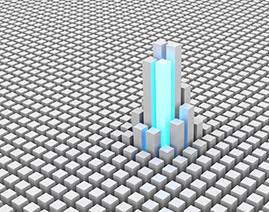
High Potentials vs High Performers
A Leaders Guide to Identify the Differences Mistaking a high-performing employee for...

Is 7% good enough?
A topic discussed at the recent World Economic Forum was the reluctance of male executives to mentor...
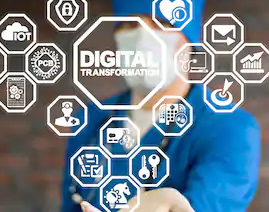
Learning & Development as Part of a (Digital) Transformation Strategy
The global workforce is constantly evolving to support a knowledge based, digital economy. Due to th...

The Future of Work – Digital Nomads and the Gig Economy
It is estimated that within a short couple of years, a large portion of the workforce (estimated to ...

Political Correctness towards Civility To be, or not to be, politically correct...
We can incidentally praise or criticize others depending on how we say it, the word choice or expres...

Let's not confuse loyalty with longevity
Let's not confuse loyalty with longevity It is interesting that the issue of loyalty in the wor...
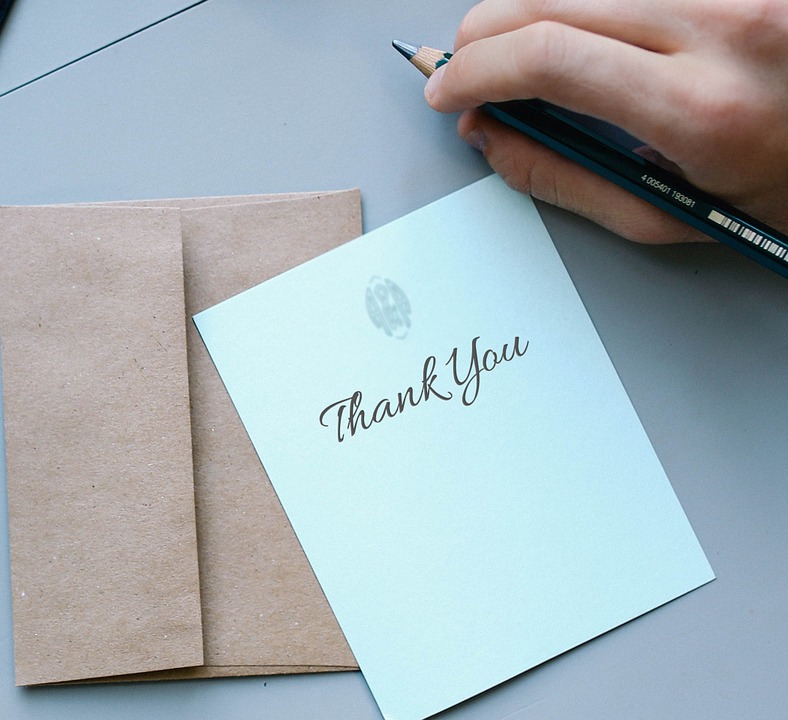
The Attitude of Gratitude - Replying does not mean Answering
The Attitude of Gratitude - Replying does not mean Answering In the ever increasingly connected di...

(Work-Life) Balance or Harmony (! / ?)
(Work-Life) Balance or Harmony (! / ?) Welcome to the world of Work-Life Harmony, beyond Work-Life...

Making Board Meetings More Agile
Making Board Meetings More Agile Given my belief that the world we live in today has changed irreve...

It's Good To Fail
It's Good To Fail I want to share with you something different from a normal convocation speech...

Four Lifehacks To Be More Productive Now
Four Lifehacks To Be More Productive Now Here are four daily life-hacks to help you to be more pr...

A leader sets an example, a leader doesn’t just order things, he does it so that others can do it
A leader sets an example, a leader doesn’t just order things, he does it so that others can do...

How would you end Executive Loneliness?
How would you end Executive Loneliness? What is the hardest part about being a leader? Altho...

Leadership Soft Skills Required for Business and Personal Success
Leadership Soft Skills Required for Business and Personal Success We often get asked, “What s...

New-G Leaders: Remember the Cow
New-G Leaders: Remember the Cow "Cow Don't Drink Water, Cannot Push Cow Head Down"&nbs...

Google your self
What are your key leadership attributes? The beliefs and behaviours that make you unique and success...

Culture is not enough … Get the right culture
A few years ago in Europe I asked a group of business leaders if they had the right culture. S...

How Leaders Can Create a Culture of Agile Collaboration to Win in a VUCA World
China growth-deceleration, the normalisation of monetary policies on the USA, tepid economies in Eur...

Is LinkedIn Improving Itself Out of Business?
I still remember the day I joined LinkedIn. A friend of mine called in frustration and asked w...
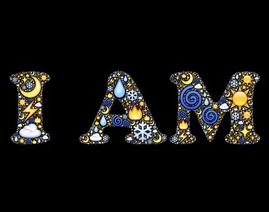
Life is the Name. Transformation is the Game.
Over the past half a century, I come to realize life is about having gratitude and resilience. We ne...
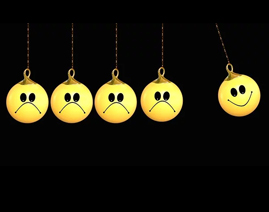
How to handle negativity and negative colleagues at work
In arithmetic's, negative into negative equals positive. But that’s just in arithmetic'...
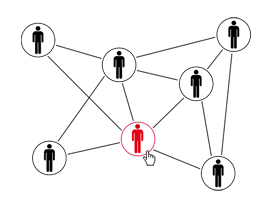
ADAPT or PERISH: It is time for HR professionals to decide and create a new function or move out of the way!
Artificial intelligence in recruitment and performance management giving employees their key deliver...

Leadership Confidence in Times of Uncertainty
How do you successfully lead an organization in uncertain challenging times? Unparalleled st...

Insights for Making Working at Home Work!
How can business and HR leaders manage challenges and find opportunities in the new realities of wor...

The Real You Is Not Really You…
The Real You Is Not Really You… We tend to see and act with our surrounding based o...

3 Powerful Lessons To Make A Successful Career Out Of Your Passion
It Feels Like a Dream As I went on stage today to receive the Asia's Most Talented Coaching Lea...

How to Recover Your Direction - a case study during COVID19
What really happened 5 days ago I set myself a new challenge. Coronavirus had fundamentally changed...
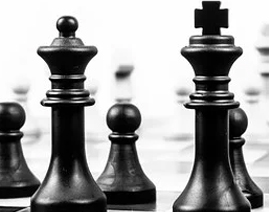
Career Tips, Please
Last week, I was tagged by the fab Tim McDonald in a LinkedIn post asking to share some pointers for...

Impact of AI on the workforce Pre and Post the Pandemic
With the sudden advent of COVID-19 - a global crisis of unprecedented scale, organisations now are c...

Career Kickstart
The first job you land could be the most important decision you make in your career. I have seen th...

Peter Principle - Are you a victim or Perpetrator?
The Peter Principle – Who do YOU Blame? In my junior years of business, many times clients an...

4 Best Practices CEOs and Public Speakers Can Learn from Athletes
What struggles do CEOs and public speakers have in common with athletes? For one, there’s the...

Who do you want to be in COVID-19?
Whilst reviewing friend’s pages on Facebook, previous colleagues, mentors and my business netw...

TRUST – The core enabler that influences and inspires your team
These are certainly extraordinary times for leaders. What do employees need from leaders? In...

On Mentoring
I attended a conference some years back. At one point when the speaker asked, “How many of us...

Men of Faith
Mankind is meant to create, both with their body and mind because that creates balance within. It ke...

3 Tips for Setting and Achieving Goals
Last week I wrote about when setting goals for 2021 we should Go Big or Go Home because it...
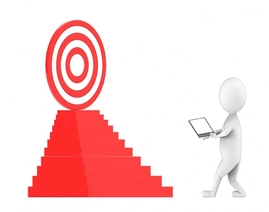
Never ask employees what would make them happy at work. Do this instead...
Most managers have realized by now that happy workplaces are more productive, more creative, attract...
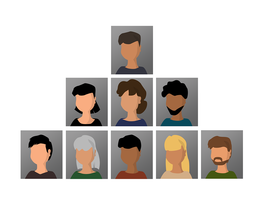
How to Choose the Right HRMS Product/Platform
The size of the business has become irreverent when it comes to the technology embracing, to remain ...

So, #IWD is done - where to next?
This week saw a record number of events to mark International Women's Day by organisations - bot...

The trauma of being “made redundant”
At work, there’s nothing quite as horrifying as the experience of being “made redundant&...

My Hopes and Dreams for Malaysia in 2021
Let’s face it – 2020 was not what we envisioned it to be. Since the start of last year, ...

What could post COVID mean for organizations?
This article was co-authored by Dave Ulrich. During this time of limited human interaction, we...
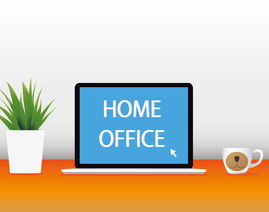
The foolproof way to get a new team to start collaborating, quicker – even in hybrid work environments!
The >#wfh environment does not give us enough organic opportunities to break the ice with ...

Why Do I Keep Hiring the Wrong People?
According to Hudson Singapore, 37% of employers are expecting to increase headcount in the first hal...

Being a Business Woman was Never My Plan
I never wanted my own business. It was never in my plans. Sure, I have an MBA. And, yes I have a fam...
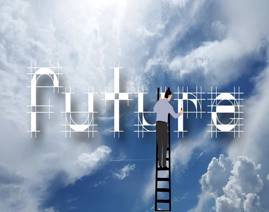
The great resignation or attraction! Is this about work-life balance....or work life purpose?
In recent weeks, there have been many studies by McKinsey, Microsoft and others published that indic...

Tune in to your self to stay tuned to work
I began writing an article on LinkedIn in early 2018 with the same title and saved it as a draft. Th...

Self-Leadership - The Critical Success Factor
What is the critical factor for any organization, large or small, to achieve success? Is it a clear...

Appreciation at Workplace
One of my early memories of my first job after graduating is that working life was terrible. Why did...

The 6 'HABITS' of highly successful “Assistants”
No matter what your title, it is most definitely how you think, what you say and your behaviour that...

AI Thinking I We are Heading Towards Self-Awareness Machine (AGI)
AI Thinking I We are Heading Towards Self-Awareness Machine (AGI) Neuralink It is a neurotechnolog...

Are Capitalism and Democracy Compatible?
Are Capitalism and Democracy Compatible? America prides itself on being able to run two great syste...

The Neurodiverse An Untapped Pool of Exceptional Talent
Our understanding of the brain and how it works so magnificently, has increased exponentially over t...

Everyone's a Great Writer Now! So Why Does Reading Feel So Empty?
Everyone's a Great Writer Now! So Why Does Reading Feel So Empty? AI can make anyone sound like...








Shadé Zahrai
Award-Winning Leadership Strategist, Personal Mastery Expert & Author
An Award-Winning Leadership Strategist, Harvard-trained coach and member of the esteemed Forbes Coaches Council, Shadé Zahrai is a specialist in building a success mindset, self-belief and self-mastery for business professionals, and enhancing people-centric cultures. Shadé Zahrai is recognised for her superhuman in her ability to translate neuroscience and psychology research into practical, actionable strategies to accelerate success. As Principal and Director of her positive-leadership company, Influenceo Global, she consults, trains and coaches leaders and teams from startups to Fortune-500s, breathing life into organisational culture to enhance change-readiness for transformation, increase engagement, support the development of people-centric strategies and boost commercial performance. Shadé is a best-selling author, Harvard-trained leadership coach, an established performer and speaker featured on TED and TEDx, and 3x Australian champion latin dancer. She's a former lawyer with a background in psychology (specialising in positive psychology) and also received her MBA in 2018.